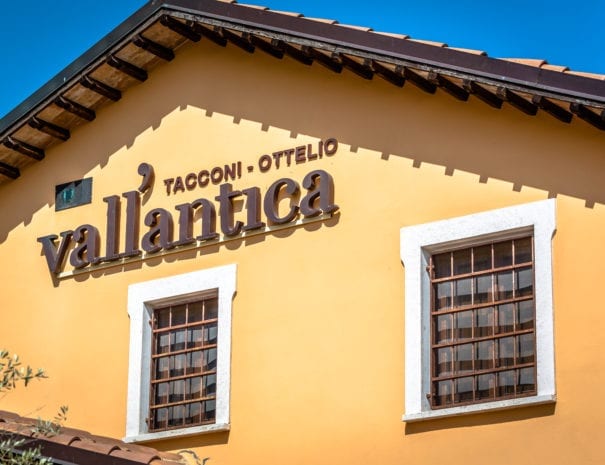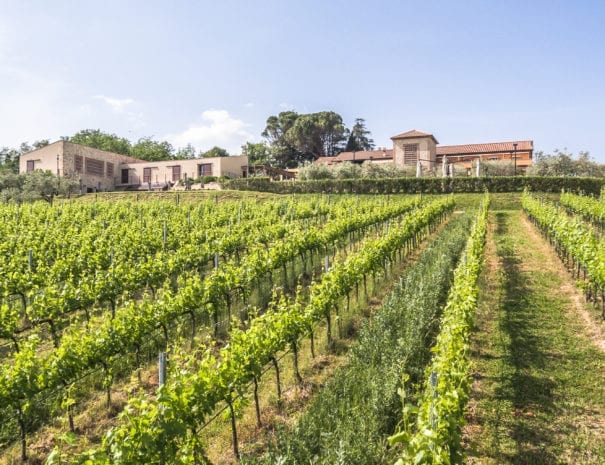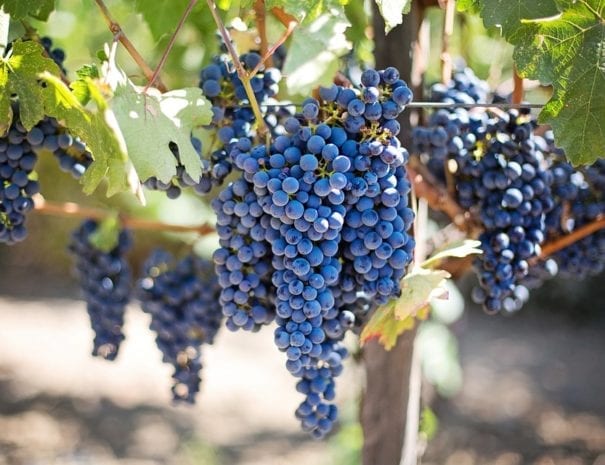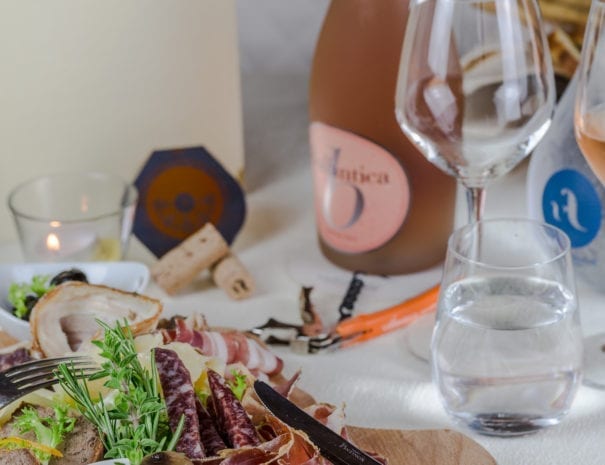CILIEGIOLO
The sweet taste of warm lands
The ciliegiolo is a real strength for the Cantina Vallantica Taccoi-Ottelio, above all due to its versatility, which means it can be vinified as white, rosé, red, sparkling or passito wine. Ciliegiolo di Vallantica was the subject of an important project in collaboration with the Department of Agricultural and Environmental Sciences of the University of Perugia, with Prof. Alberto Paliotti, professor of Viticulture and Oenology. As a result of this collaboration, in fact, the Ciliegiolo grape has finally been characterised both from a vegetative-productive and qualitative point of view. The project had the dual objective of assessing the oenological potential of this grape variety and optimising some innovative cultivation techniques aimed at perfecting management of the foliage and improving the quality of production. Given the strong competition that characterises the international wine context, dominated by a small number of vines, the production of individual, recognisable wines, capable of representing local characteristics, are increasingly important. For this reason, the research project that included the Cantina Vallantica and the University of Perugia, also provides for a feasibility analysis of Ciliegiolo wine from "old vines", that is, from vineyards characterised by a rather advanced age, exceeding 35-40 years, from a farming system now in disuse in Umbria, such as the palmette, and from controlled unit yields, with superior organoleptic characteristics. The research has already obtained interesting results, thanks to the production of a pure Ciliegiolo from a reserve aged in Tonneaux, a Grappa and a Passito.




Historical notes on Ciliegiolo
The origins of Ciliegiolo are uncertain. In 1590, Soderini cites a "Ciregiuolo dolce": "... ... vine with long and sparse bunches, the fat grains furrier than any other variety of grapes, its flavour is sweet and odorous and thus it makes the wine; it does well in warm countries and lands". Micheli (1679-1737) described a "round red cherry of Spain" which however had "beautiful red" berries and another "round cherry of Spain" with different shaped berries. It seems that it was introduced in Italy and in particular in Tuscany around 1870. Mondini (1903) found it cultivated, at the beginning of the century, in sixteen provinces of Emilia, Marche, Umbria, Tuscany, Lazio, southern Mediterranean areas and Sicily. In these areas the winemakers liked its abundant and regular production, early ripening of its grapes (compared to local vines of the same category), its adaptation to medium altitudes and the finesse of its grapes which convey excellent colour, flavour and the ageing characteristics to the resulting wines. Subsequently Ciliegiolo was described by Racah as early as 1914, by Marzotto (1925), by De Astis (1937), with greater precision by Dalmasso (1946) and then carefully by Cosmo (1948) in a comparative ampelographic test with other typical grape varieties of central Italy, such as Montepulciano, Canaiolo and Sangiovese. It was given the name "Ciliegiolo di Spagna", according to Racah (1932), because tradition has it that it was transported from Spain by a group of pilgrims when they returned from a trip to the Sanctuary of S. Giacomo di Compostella. Recent DNA analyses have highlighted the harmony between this grape variety and Aglianicone (Crespan et al. 2002). It is thus assumed that it is an ancient grape variety given its relationship with Aglianicone. It is also considered one of the parents of the Sangiovese.
Ciliegiolo in Umbria
The growing demand by consumers for typical and differentiated wines has led to the progressive reintroduction of typical local vines in Umbria. Ciliegiolo undoubtedly falls into the small group of vines considered minor, since it has been very little used in recent decades, but was widely cultivated in the past. The reasons for its decline are many, but the ones that stand out are: the high productivity due to both a high average bunch weight (greater than 350 g) and a high bud fertility (greater than 1.6-1.7); it guarantees good results only on poor soils and in dry environments where it manages to obtain an optimal vegetative-productive balance without additional input; it does not like to be pruned short because it is characterised by low fertility of the basal buds; it is particularly sensitive to bunch rot because it has a large grape and a compact, tight bunch; it matures rather early and loses acidity quickly and easily, consequently giving a flat flavour to future wines. Recently it has been noticed that, if it is subjected to suitable agronomic treatments, a typical wine with high organoleptic qualities can be obtained. These are precisely the characteristics that could determine the success of the product on today's market. Historically, Ciliegiolo was vinified together with other red grapes such as Sangiovese and Canaiolo. Today's trend is to characterise wines by linking them to the production area and also by vinifying single grape varieties. At present, however, the production quotas of pure Ciliegiolo in Umbria are rather small, but increases are expected in the near future. To date, in Umbria, there are about 390 hectares of Ciliegiolo especially in the province of Terni (Palliotti, 2008). The Umbrian areas historically linked to the production of Ciliegiolo are the DOC area "Colli Amerini" and that of the "Trasimeno". The producers of the Colli Amerini actually submitted a proposal recently to modify the DOC production guidelines to include the monovarietal "Ciliegiolo" typology, that is, as a single varietal wine, to demonstrate the growing interest in this variety.
Ciliegiolo ampelographic sheet
Bud apex: average, slight expansion, velvety, greenish sometimes with slightly carmine rim or bronze hues. Leaf: medium or large, pentagonal, three-lobed or five-lobed. Open U-shaped petiolar sinus, deep upper lateral sinuses with overlapping edges, lower lateral sinuses, when present, with overlapping edges or narrow V-shape. Flat or slightly overhanging flap, rather thick, smooth, with involute lobes. Hairless upper side, arachnoid lower side. Irregular teeth with straight or convex edges. Green petiole slightly tinged with pink. Woody branch: average, branched, elliptical section, light brown bark with few striations. Bunch: large, elongated, cylindrical-pyramidal, winged, (with one or, more often, two wings) of average semi-compact appearance. Berry: medium-large round or roundish, very pruinose skin, average thickness, purplish black colour. Juicy pulp with a simple, pleasant flavor.
Germination period: average
Flowering period: average
Veraison period: average-early
Ripening date: average-early
Vegetation habit: upright
Vigour: average – high
Basal bud fertility: good
Productivity: high
Pruning: even short spur
Mechanical harvest: high
Plant pests:
Downy mildew: average; Powdery mildew: average; Grey mould: high; Esca disease: low.
Climate
Spring frosts: sensitive; Wind: sensitive; Drought: good.
Soil
Chlorosis: good; K deficiency: good; Mg deficiency: average
Most suitable soils: hilly, not too fertile and humid.
Potent ruby red wine, alcoholic, full-bodied and fruity flavour, but sometimes flat because it lacks acidity. For these characteristics it is very suitable for cutting with other wines that are low in alcohol and have a sharp flavour; under these conditions, it can provide a good quality product that ages well. Nowadays, it is also appreciated for the production of new wine and it is also a renewed interest for the production of single varietal wines, particularly rich in colour and taste.
